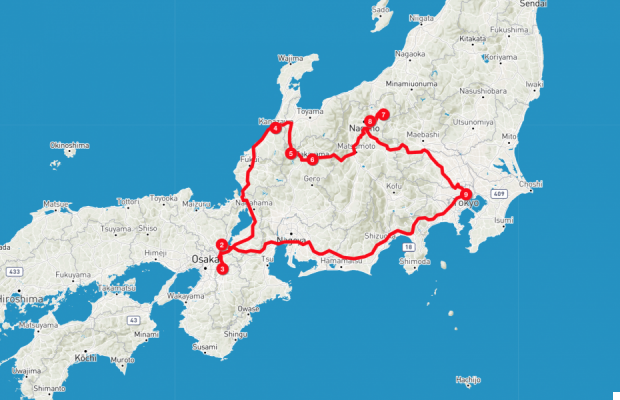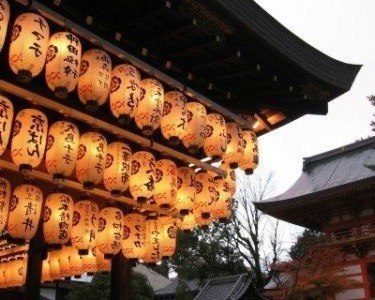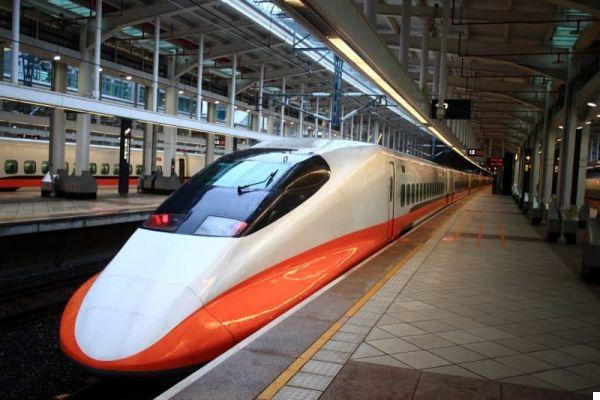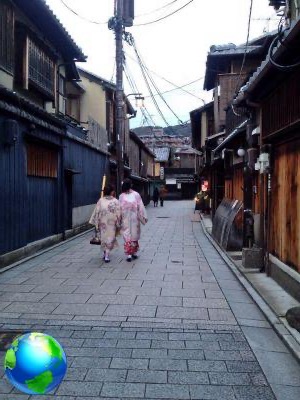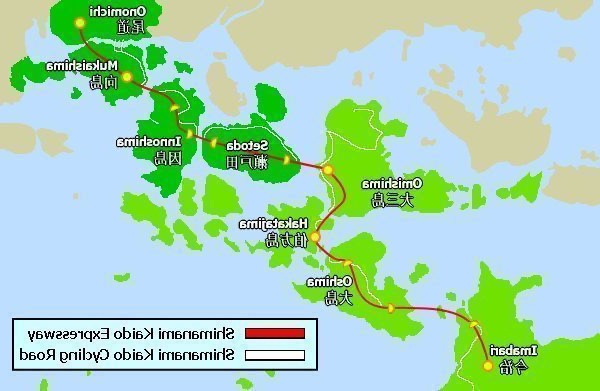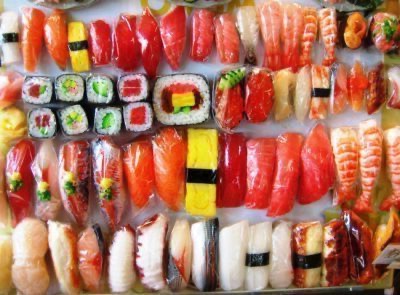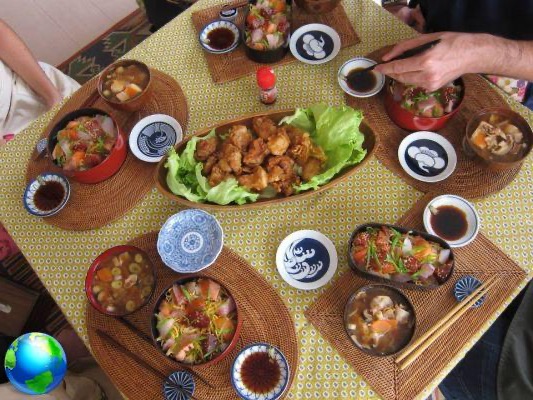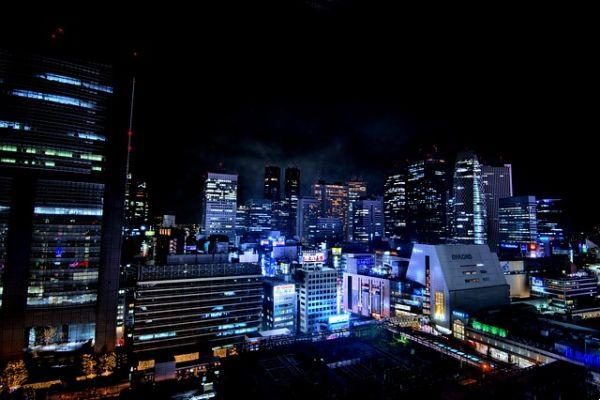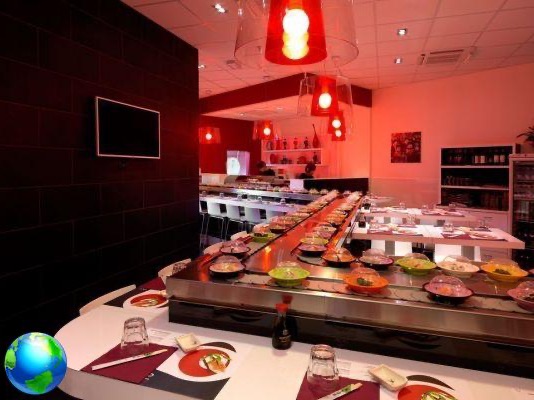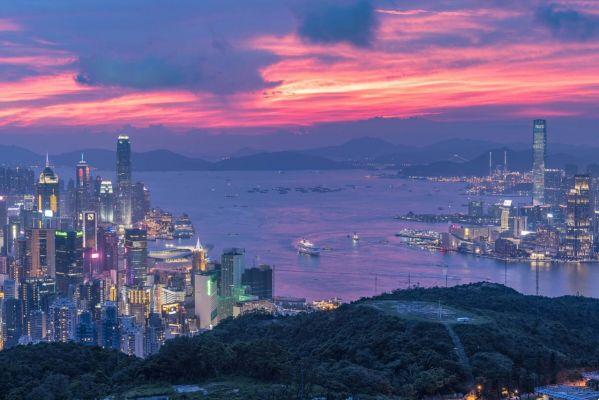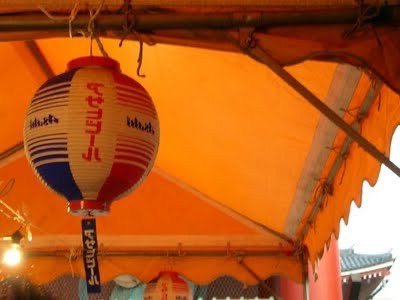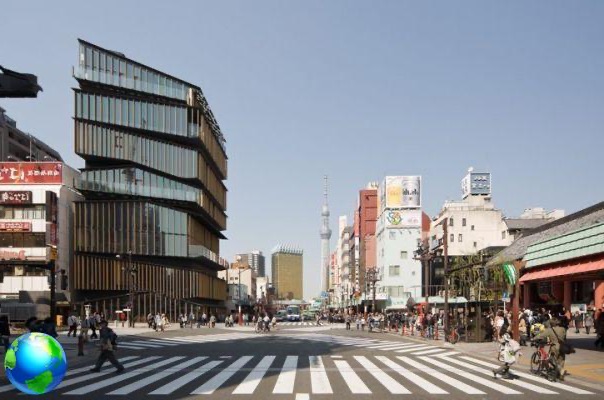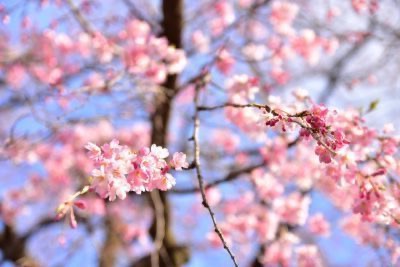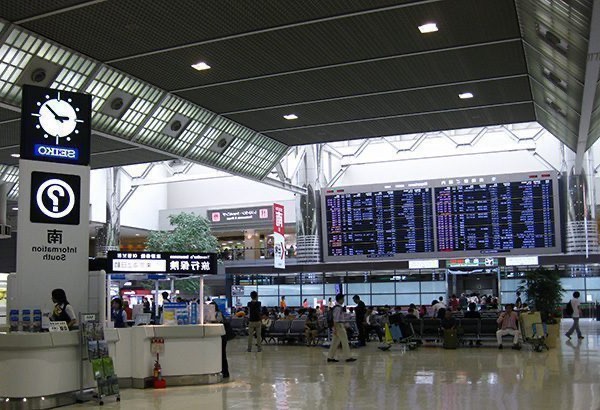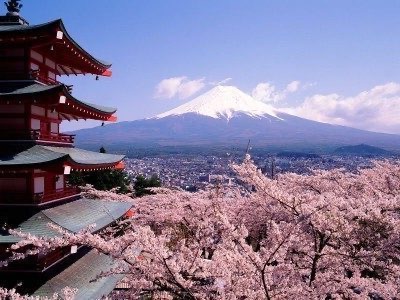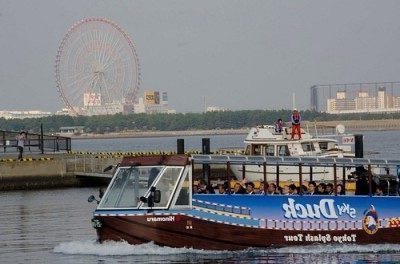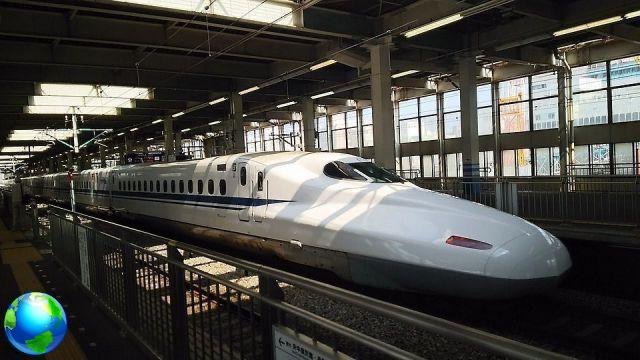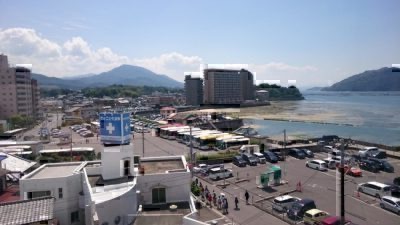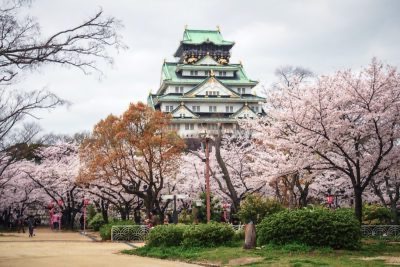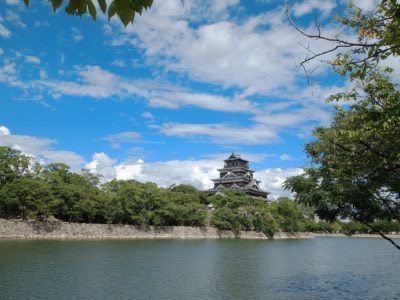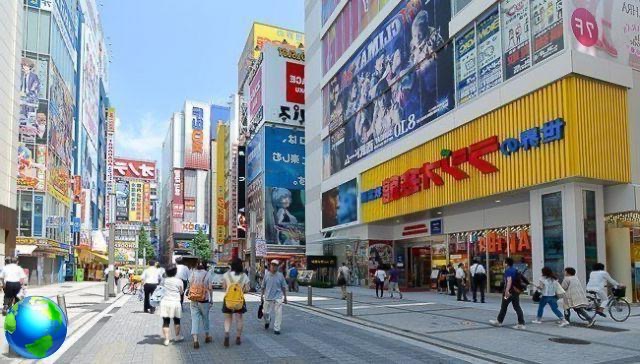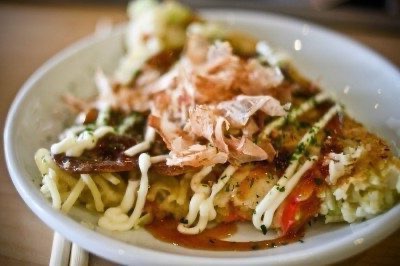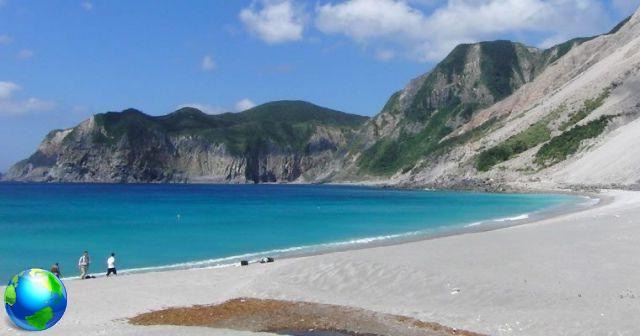I returned from Japan almost 1 years ago and have only started writing about this trip now. Japan is “a lot”, it's full of things to do and see, and I was afraid to get my hands on the pile of notes I took when I was there. It must have been the good intentions for 2020, or the fact that this year there will be the Olympics in the Rising Sun, the fact is that I finally convinced myself to write about this country, one of the most culturally distant I've ever visited (together with 'India of course). Tokyo represents the quintessence of commonplaces about Japan, when you get there you are overwhelmed by a whirlwind of stimuli of all kinds, luminous, olfactory, visual ... before gradually discovering all the nuances. It is a city where you can stay 3 days like 10 or more, is a huge metropolis with millions of things to see and experience. 3 or 4 days are the average number that most visitors can dedicate to it so I "settled" on an itinerary (exhausting !!) to be able to see "The best of Tokyo" in these few days.
Before leaving, I recommend that you also consult the official site of Japanese Tourism where you can download different material in pdf (maps, guides, etc.) and where you can find lots of useful information to organize your trip.
When to go to Tokyo
The temperatures in Tokyo are quite similar to those in Spanish cities, but the seasons are a little different (up this site you will find the weather forecasts divided by regions). In winter temperatures are low but the skies are clear. In spring the days become gradually warmer and there is the show of cherry trees in bloom (the so-called hanami or sakura) between March and early April (you can monitor it from this site); this is the most expensive and busiest time of the year to visit Tokyo and all of Japan. Summer is the least suitable period to come to Tokyo (and a large part of Japan) because the temperatures are very high, as is the humidity, and it rains a lot especially between June and mid-July. The autumn it is an excellent choice because it guarantees mild and sunny days and the spectacle of foliage.
Travel insurance is required
In Japan our health coverage is not valid. My advice is to always take a classic medical-luggage insurance that can cover you during the trip. I am very happy with many insurance companies, a site that compares the policies of different companies and proposes the most convenient policy for that particular trip. To do this you will have to enter the data relating to your trip (country, duration, etc.) and they will send you an email with the best proposal that you can then buy directly online (!!!).
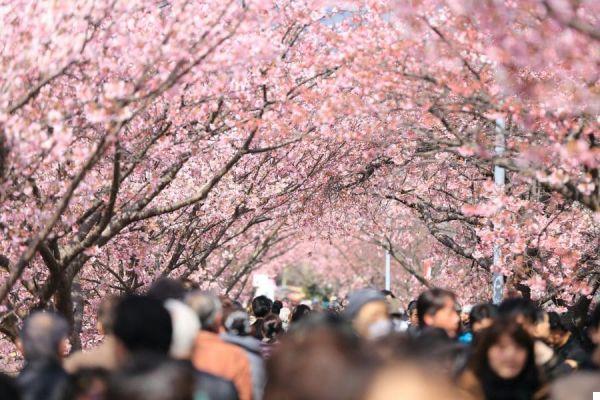
How to get to central Tokyo from Narita and Haneda airports
How to get around Tokyo
Given the size, the best way to get around Tokyo is by subway or train. In Tokyo there are 2 Metro companies, the 9 lines of the Tokyo Metro and 4 Toei lines, which operate at slightly different rates. The 2 networks share some stations but unless you buy a pass that includes both (see below) you cannot change without paying a supplement at the turnstiles. These lines are also interconnected with the JR rail network (which you can use for free if you have the Japan Rail Pass).
The rates vary according to the Km you have to travel, and range from a minimum of 170 Yen to a maximum of 310 Yen. If you are in Tokyo for several days, my advice is to buy the Tokyo Subway Ticket (only foreign citizens can do it !!) for 24, 48 o 72h (calculated from first use) which includes both metro lines and costs respectively 800, 1200 or 1500 JPY. This pass can only be purchased in Tokyo Metro Tourist Information Desk airports and some main stops (Ueno, Ginza, Shinjuku, Omote-Sando and in the main train stations) and in some Tokyo Metro Pass Offices which are found in a dozen stations. As soon as you see the Tokyo subway map you will be scared, but then you will see that underneath it is proof of fool! Each stop is characterized by a letter and a number (eg A7), as well as the exits. If you use Google Maps it will tell you exactly which line to take, which stop to get off at and which exit to use (as well as the price of the ticket for the entire route). The Metro and trains run approximately from 5 to midnight.
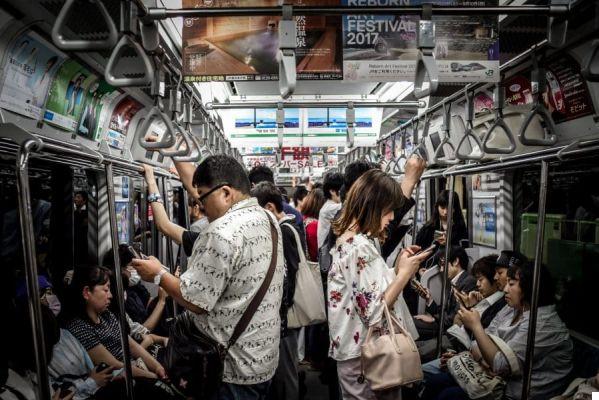
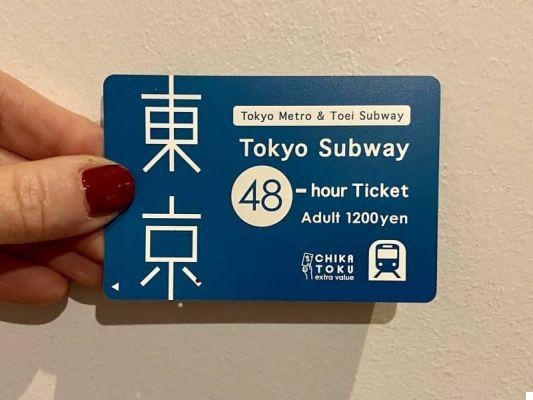
Where to sleep in Tokyo: better Asakusa, Shinjuku or Akasaka / Rappongi?
The choice of where to sleep in Tokyo can be decisive! The things to consider are, as always, the distance from most points of interest, the price and the type / price of accommodation (hostel or hotel). My advice is to sleep in one of these 3 areas: 1) Asakusa: easy to reach from and to the airport, less chaotic neighborhood and with the best hostels in the city. 2) Shinjuku: very well connected to everything, close to the railway stations and full of restaurants, bars and clubs. 3) Akasaka / Rappongi: central area, well connected, with high-level facilities and a thousand bars, restaurants and clubs.
One thing, both in hostels and hotels in Japan you will always find shampoo, conditioner, various face / body creams, slippers and (almost always) even the hairdryer so don't bring anything!
- Book & Bed Tokyo (Asakusa): if you are a book lover, this is the hostel for you! The beds are "set" in a large bookcase.
- Bunka Hostel (Asakusa): minimal but well-equipped hostel with a nice bar that is also very popular with outsiders.
- Nine hours Shinjuku North- Capsule Hotel (Shinjuku): you cannot say that you have lived Japanese life to the full if you don't sleep at least one night in a capsule hotel! This is part of a chain and they are all really cool and super comfy.
- Park Hyatt (Shinjuku) : if you have a budget (a lot!) and you want to relive the scenes from the movie “Lost in Translation”, here you are!
- Hotel Felice Akasaka (Akasaka): minimal and design hotel in a beautiful street, convenient for getting around on foot and with onsen and spa inside.
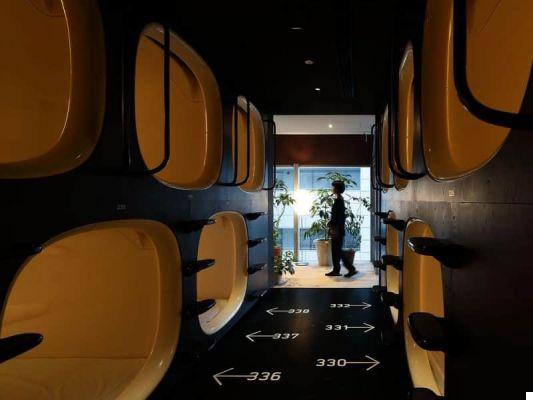
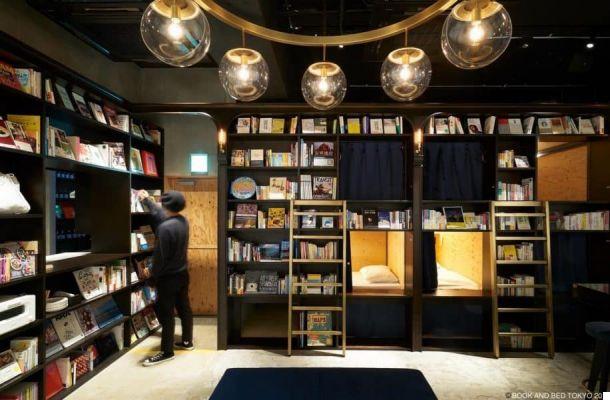
Tokyo itinerary in 3 days
Giorno 1: Asakusa – Sky Tree – Ueno – Akihabara
Asakusa: the most traditional neighborhood
Maybe it was the first area of Tokyo I saw, but it was love at first sight! The Asakusa neighborhood is one of the most traditional and characteristic neighborhoods in Tokyo and there is the most beautiful temple in the city, the Meaning-ji. I think I will remember for a lifetime the moment I first saw it at sunset! Start your visit right from Nakamise-Dori, the road leading to the temple, full of little shops. When you are about to enter the temple, buy an omikuji (ticket with an oracle) at one of the kiosks. Follow the instructions (there are also in English); if the prediction is negative, tie the ticket to the rack and try your luck again! Around the temple the houses are low and traditional and host small restaurants, bars, shops and hostels. If you love kitchen utensils, pottery (and Japanese pottery!) Don't miss it Kappabashi-dori.
Tokyo Sky Tree: the tallest tower in the world
Height lovers will not be able to miss the view from the panoramic terraces of this telecommunications tower which, at 634 meters high, is the tallest in the world and the second tallest man-made structure in the world after Dubai's Burj Khalifa. . The lines to go up are always very long, but foreigners have the possibility to buy online from this site a skip-the-line ticket (showing the passport then at the entrance). The cost of the combo ticket to get on both terraces (the one at the 350th and the one at the 450th) is 15 euros. The view of Tokyo from above from here, however, is crazy! If you are very lucky and catch a haze-free day you might even see Mount Fuji!
Nearby there is also the famous Asahi Beer building designed by Philippe Starck which is called the "golden poop" (when it should have represented a stylized flame ahaha instead).
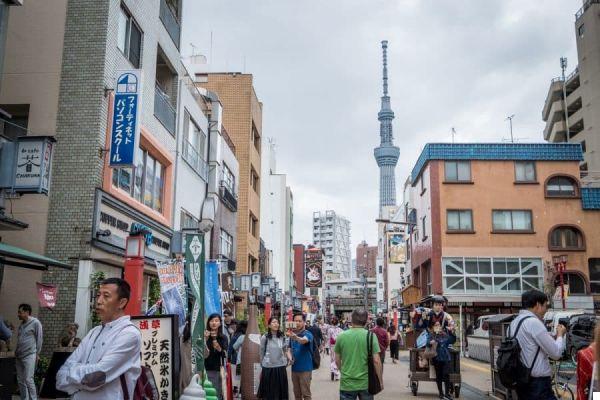
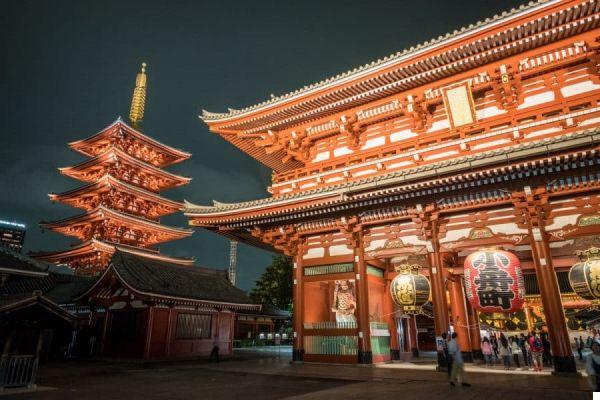
Ueno Park and Tokyo National Museum
From Asakusa you change neighborhood to reach Ueno, around whose large park there is the highest concentration of museums in the city (including the beautiful Tokyo National Museum). Enter near the lake (where the Shitamachi Museum is) and walk inside the park until you reach the National Museum. This museum preserves the largest collection of Japanese art in the world which includes ceramics, sculptures, samurai swords, kimonos and much more.Consider at least 2 hours for a rushed visit.
Serata ad Akihabara: anime e manga
From Ueno then take the train to reach the area of Akihabara, which is the perfect place for fans of animated films, manga and electrical and electronic equipment. Even if you are not particularly interested in these "themes" it is still worth taking a trip here to see the famous "Maid Cafe"(For men) and"Butler Coffee”(For women, more combed and expensive), where good-looking ladies / gentlemen serve food and drink. Another alternative is to return to Asakusa and have dinner in one of the many restaurants; also consider those on the river, especially if you go there in the summer.
Where to eat in Asakusa
- Yoroiya Ramen: ramen top! You will have to queue but it will be worth it!
- Ichiran Ramen: same as above! It is part of a chain and they are all good
- Bon Hanabi: small restaurant overlooking the river, very intimate, where you can eat excellent soba but not only
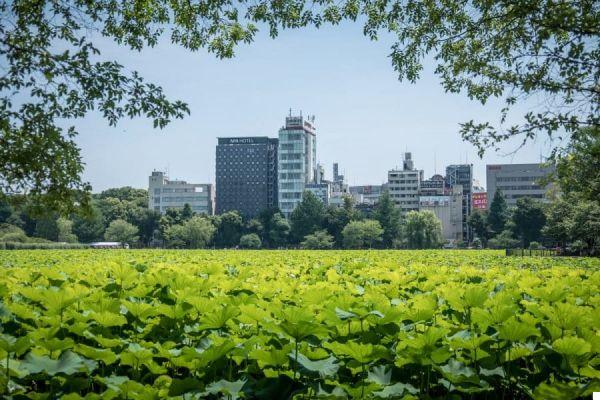
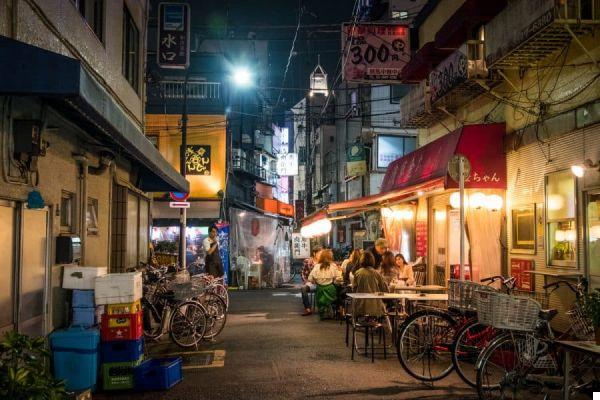
Day 2: Ginza - Imperial Palace - Tsukij Market - Odaiba and the Digital Art Museum
Ginza and the Imperial Palace
The second day of the Tokyo itinerary starts from gardens of the Imperial Palace. Here is the residence of the emperor and his family (and a large area is off limits), but some gardens are open to the public and are worth seeing, such as theHigashi Gyoen (the most beautiful) and the Kitanomaru-koen. Then walk south to reach Marunouchi (an area that is undergoing a major transformation) and the beautiful Tokyo station in red bricks, up to the Ginza neighborhood, the district of boutiques and luxury shopping centers. The streets are well-kept and elegant and you will only be surrounded by rich Japanese people.
Tsukiji Market: the best Japanese street food
As you continue walking south on Harumi-dori you will pass the famous one Kabuki-za Theater before reaching the Tsukiji area, where until 2018 the famous Tokyo fish wholesale market was located (which has now been moved to Shin-Toyosu). However, the Tsukiji outdoor market remains here, which is one of the best (and most suggestive) places to eat fish cuisine (sushi but not only). This market is a maze of alleys teeming with 5-seat restaurants and bars where you can eat all kinds of street food and gastronomic delicacies. To these have been added craft shops (especially kitchen utensils but not only) where you will find many interesting things (I am crazy with ceramics for example!).
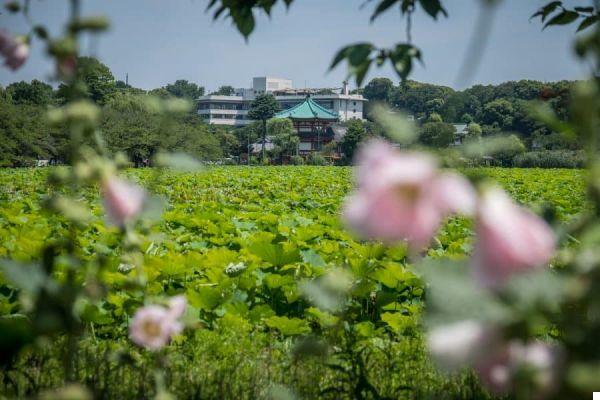
Odaiba and the Museum of Digital Art
From Tsukiji then take the train to reach the island of Odaiba. The first stop on the island will be the brand new Museo D'Arte Digitale TeamLab Borderless (buy tickets several days in advance from this site, otherwise you will not be able to enter! The entrances are limited). Open since June 2018, this space allows you to directly become part of the work of art itself and has immediately become one of the most visited places in Tokyo. From there move on to see the Giant Gundam in front of the Diver City Tokyo Plaza (if you are a fan of the genre of course ... you may well go shopping there as you will be spoiled for choice!) before reaching the viewpoint on the bay, in front of the Statue of Liberty. From this kind of gardens bordering the water you will have a magnificent view of the Rainbow bridge and it will become more and more beautiful as it gets dark.
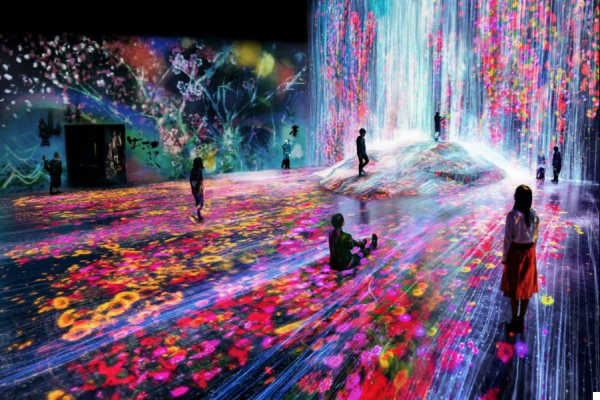
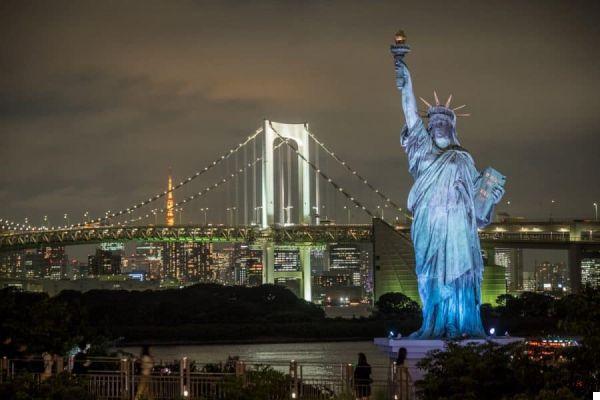
Serata a Rappongi Hills
Finally, for dinner and the evening, move to the Rappongi Hills area, where you will be spoiled for choice both for restaurants (especially those inside the Rappongi Hills Towers) and for clubs / clubs. If you're a fan of Kill Bill, head straight to Gonpachi, the restaurant that inspired Tarantino for the fight scene in Kill Bill Vol. 1.
Where to eat in Ginza, Akasaka and Rappongi Hills
- Din Tai Fung (Ginza): my favorite restaurant in the world to eat ravioli!
- Nagatacho Kurosawa (Akasaka): for Akira Kurosawa fans. The restaurant is inspired by several of his films (but the food is also very good)
- Itamae Sushi (sia a Ginza che Akasaka): very good sushi chain and very good value for money
- Gonpachi (Rappongi Hills): the restaurant that inspired Tarantino. Very suggestive
- Ippudo Ramen (Rappongi Hills): ramen top! It is part of a chain and they are all good
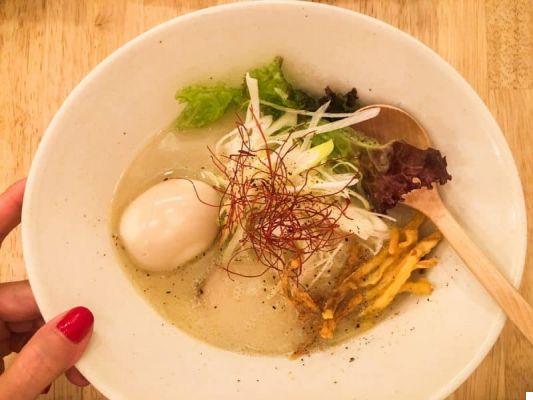
Giorno 3: Rappongi – Daikanyama e Naka-Meguro – Shibuya – Harajiuku e Omotesando – Shinjuku
Rappongi (National Center of Art)
If you are not passionate about art or architecture you can skip this stage and go directly to the second one.I would say to return in the morning to Rappongi both to appreciate the architecture of the towers and to visit the National Art Center, which is located in a beautiful glass building in light green color. It is a huge space that can accommodate even large installations that are worth seeing (with the above premises).
Daikanyama e Naka-Meguro: i quartieri hipster
From Rappongi take the Hybiya Line to Naka-Meguro. Naka-Meguro it is a decidedly hipster and bohemian residential neighborhood, with vintage shops, bookstores and clubs that I loved. Go along the Meguro-gawa canal and then turn north, getting lost in the streets of Daikanyama, the neighboring residential neighborhood, also very nice with trendy boutiques, art galleries and bars with outdoor seating.
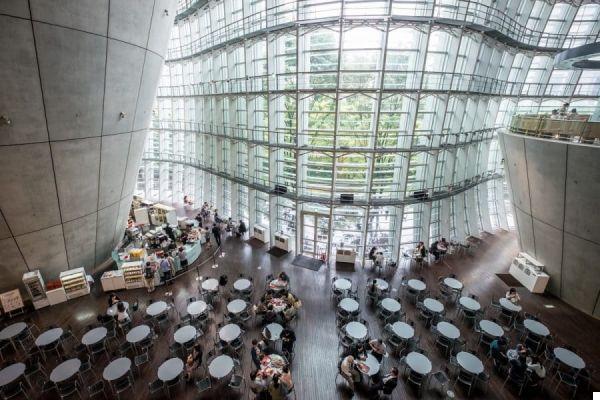
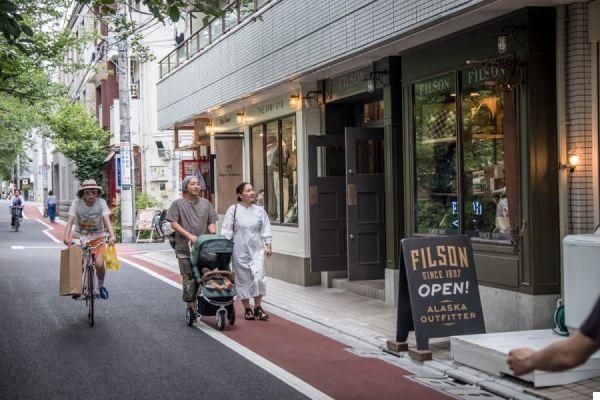
Shibuya: the busiest intersection in the world
If you are a good walker you could walk to Shibuya Crossing, but the road is long so consider taking the subway. Shibuya is a shopping paradise for young people who flock to its malls (all skyscrapers) and is famous for the 5-way intersection which is one of the most photographed pedestrian crossings in the world. But what is the highest point from which to admire the Shibuya Crossing? From 1 Nov 2019 it opened Shibuya SKY, a skyscraper that stands right above the intersection and has an observatory on the rooftop. The rooftop is 229 meters high and guarantees a 360º view. Tickets can only be purchased in advance and only online from this site. at a price of 1.800 JPY (about 13 euros). By purchasing on the site you must indicate in which time slot you want to enter but once on the rooftop you can stay there as long as you want. Once you get off, you can't miss the statue of Hachicko (the dog from the movie with Richard Gere) in the place where the dog waited for his owner to come home from work.
Harajiuku and Omotesando: Yoyogi Park and unbridled shopping
From Shibuya start walking up Meji-dori towards the north to reach the intersection with omotesando where is the Tokyu Plaza Omotesando Harajuku, whose entrance is one of the most instagrammed places in Tokyo. Omotesando is another luxury shopping street, it is a tree-lined avenue with fairly low buildings where the boutiques of the big brands are located. Immediately behind, however, come on Cat street, on the other hand, there are small shops of independent brands, very nice restaurants and bars. Then go back to Meji-dori to reach (after a while, on the left) Takeshita- dori, the most famous street in Harajiuku. Here you will barely be able to walk for the delirium of people who are there !! There are dozens of shops here that sell everything and are very popular with young people in Tokyo. At the end of the street you can rest your eyes and ears by entering the Yoyogi park. Inside, hidden in the greenery, is the Meiji Jingu temple, which is one of the most important Shinto shrines in Tokyo. Its centenary will be celebrated in 2020 so there will certainly be special events.
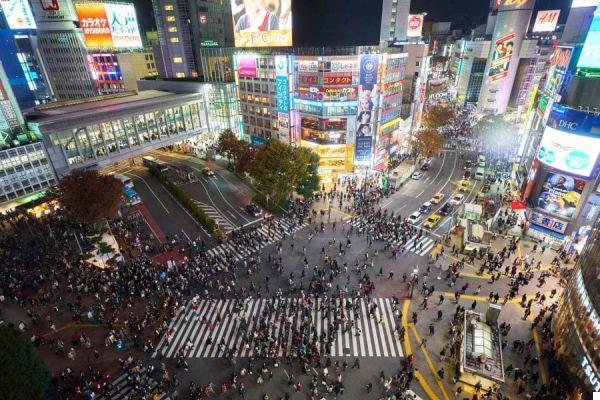
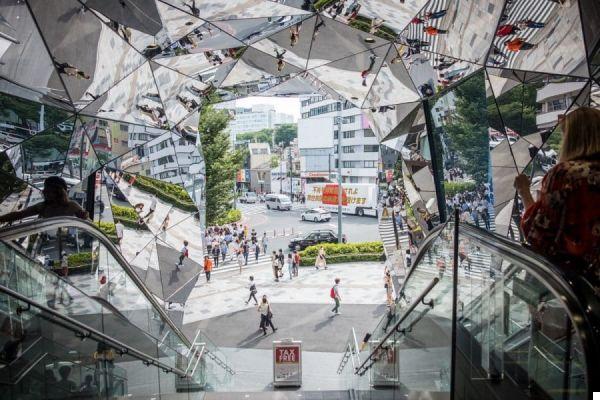
Shinjuku: the quintessence of Tokyo
We end this 3-day itinerary in Tokyo with a flourish with one of the most representative districts of the city, that of Shinjuku. Here is everything you'd expect to see in Tokyo, skyscrapers with immense illuminated screens, rivers of people walking, clubs of the lowest category, red-light streets, high-end restaurants, government offices and so on and so forth. metta: a real concentrate! Here you will have a thousand options on what to do, I will list a few: 1) see Tokyo from above from the Tokyo Metropolitan Government Building (open every day until 23pm, with free admission, but you will have to queue up a bit!), 2) go to eat in the alley of Omoide Yokocho (or alley of memories but also alley of piss, an alley that follows the tracks full of micro restaurants and super characteristic bars), 3) throw yourself in Kabukicho red light district (for the first time in my life I saw menus with all the girls proposed!), 4) going to eat in one of the many excellent restaurants (see below), 5) reliving the scenes from the film Lost in translation going for a drink in the New York Bar del Park Hyatt, 6) walking in the maze of alleys of the Golden gai and stop for a drink in one of the many tiny bars, 7) spend a few hours in a love hotel, 8) see uno show al Robot Restaurant, where giant robots are maneuvered by women in bikinis, 9) go dancing in Tokyo's most famous clubs such as the Womb or others (here you can find the complete list of Tokyo evenings).
Where to eat in Shinjuku
- Itamae Sushi: very good sushi chain and very good value for money
- Sushi Mamire Shinjuku: another good sushi restaurant at a fair price
- Momo Paradise Kabukicho: Shabu Shabu restaurant (Bourguignonne is cooked in broth), all you can Eat
- Din Tai Fung Shinjuku: always them, the best dim sum in the world!
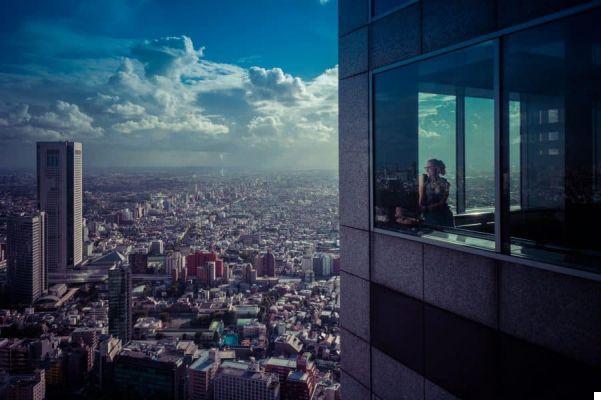
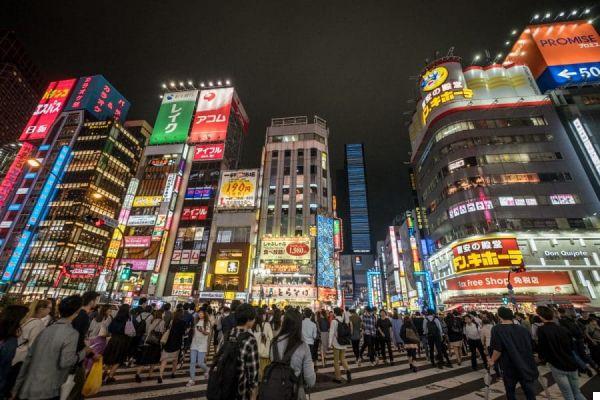
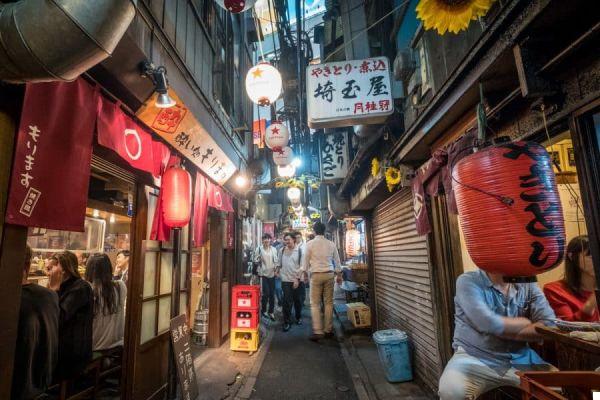
Other things to do / see in Tokyo
- Attend a sumo match: Experience the thrill of Japanese sumo wrestling by attending one of the three annual tournaments that take place in Tokyo. If you do not happen in the tournament period you can instead attend a sumo training session.
- Ghibli museum: Fans of the animation master Miyazaki will not be able to miss this museum designed by himself and where they can explore his fairytale world. Tickets must be bought well in advance!
- Relax in the Oedo-Onsen-Monogatari Spa in Odaiba (skipping the line): to live an authentic Japanese cultural experience relieving stress and pain thanks to 13 different types of thermal baths.
- Take a guided tour between Manga and Anime in Akihabara: Explore Tokyo's center of anime and manga culture with an expert guide in the Akihabara district.
- Take a private cooking class with a local chef: to learn how to cook real Japanese sushi with a local chef.
You may also be interested in:
- How to organize a trip to Japan
- How to get around Japan: all you need to know about the Japan Rail Pass, the metro, buses, internal flights and taxis
- How much does a trip to Japan cost?
- Travel to Japan: itinerary between culture and nature




